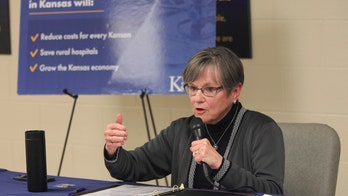
NEW YORK, NY - MAY 31: Twenty-ounce bottles of regular and diet soda are seen for sale at a Manhattan deli on May 31, 2012 in New York City. New York City Mayor Michael Bloomberg is proposing a ban on sodas and sugary drinks that are more than 16 ounces in an effort to combat obesity. Diet sodas would not be covered by the ban. (Photo by Mario Tama/Getty Images) (Getty)
The federal government’s major food-assistance program pays out as much as $2.1 billion annually for the purchases of sugar-sweetened drinks, according to a new study.
The Supplemental Nutrition Assistance Program, more commonly known as food stamps, overall pays out roughly $80 billion annually to roughly 46 million poor and low-income Americans, according to the federal government.
The study conducted by Yale University researchers and published Monday by the American Journal of Preventive Medicine also points out that the findings were made at the same time the federal government’s Dietary Guidelines for Americans is recommending Americans cut back on sugary drinks.
The eight-page study also stated the upcoming reauthorization for the Agriculture Department-administered program might be a good time to “reconsider the program priorities” -- specifically trying to better ensure the taxpayer money goes to more nutritional diets.
The money for the program is provided through the federal Farm Bill, which is set to expire by the end of the month. The Senate has passed its version, but the Republican-controlled House wants to cut roughly 2 percent in food stamp spending, which has roughly doubled in cost under the Obama administration.
The Agriculture Department could not be reached for comment Wednesday afternoon.
The researchers used scanner data from a New England supermarket chain to see what kind of refreshment beverages roughly 39,000 households chose in the first six months of last year. Some of the families also had been part of the federal food-assistance program known as Women, Infants and Children, or WIC.
Sugar-sweetened beverages accounted for 58 percent of the refreshment beverages purchases made by SNAP families and 48 percent by those only on WIC. Soda was the most frequently purchased drink by both groups, followed by bottled water, fruit-based beverages, then sports drinks. SNAP paid out $1.7 billion to $2.1 billion a year for sugar-sweetened drinks bought at the grocery stores, according to the study.
“Allowing annual use of multi-billions of SNAP benefits to purchase products that are at the core of public health concerns about obesity and chronic illnesses appears misaligned with the goals of helping low-income families live active, healthy lives,” the researches also concluded.
They also suggested that numbers could have higher considering the socio-demographic conditions in New England are somewhat better than those nationwide.
At least one public health expert thinks putting more restrictions on the SNAP program might be a bad idea.
Barbara Laraia of the University of California Berkeley’s School of Public Health, points out the argument that more restrictions might send a “paternalistic message that it is OK to restrict what poor Americans purchase with federal dollars, presumably because they do not know any better.”




